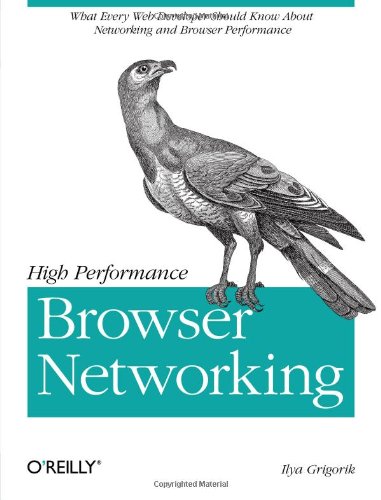The email sent will contain a link to this article, the article title, and an article excerpt (if available). For security reasons, your IP address will also be included in the sent email.

If you are Google you don't just complain about performance on the web, you do something about it. Doing something about web performance is the job of one Ilya Grigorik, Developer Advocate, Make the Web Fast at Google, and author of a great new book: High Performance Browser Networking: What every web developer should know about networking and web performance.
That's a big topic you might be saying to yourself. And it is. The book is 400 plus information packed pages. But never fear. Ilya writes in a very straightforward style. It’s like a man page for the web. Which is a good thing.
In case you are not familiar with Ilya, he's the perfect choice for writing such an ambitious book. For years Ilya has been producing excellent content on his blog and if you search YouTube you'll find presentation after presentation on the topics found in the book. Authority established.
Reading the book I was struck by what a complicated beast or little World Wide Web has become. That's clear from just the chapter titles: Primer on Latency and Bandwidth, Building Blocks of TCP, Building Blocks of UDP, Transport Layer Security, Introduction to Wireless Networks, WiFi, Mobile Networks, Optimizing for Mobile Networks, Brief History of HTTP, Primer on Web Performance, HTTP 1.X, HTTP 2.0, Optimizing Application Delivery, Primer on Browser Networking, XMLLHttpRequest, Server Side Events, WebSocket, and WebRTC.
I've often imagined there's a white board at Google with "Don't Erase!" written in red at the top. On it is a complicated diagram of every part of the web and Google's master plan for making that part better. The book reads a little like that imagined diagram. The Primer on Latency is a real eye opener. If you wonder why people are always going on about latency then this chapter is for you. The chapter on Mobile Networks is really good, it fills in a lot of details in an excessively complicated space. With HTTP 2.0 on the horizon you can learn about the entire thing here in full on gory detail. I'd never heard of Server Side Events before so that was enlightening. And the WebRTC chapter has an amazing amount of detail on an exciting new browser capability.
If you've been burned by books that were just reprints of manuals and specification documents, that's not the case with this book. It's full of practical real-world advice. For example, there' one example of how "Apple engineers saw a 300% performance improvement for users on slower networks once they made better reuse of existing TCP connections within iTunes, via HTTP keepalive and pipelining!" Bits like this can be found throughout the book.
And many chapters end with a practical set of things you can do to implement all the stuff you've learned part. For example, the WebRTC chapter ends with a Performance Checklist that begins with a few sections like:
Signaling service
• Use a low-latency transport.
• Provision sufficient capacity.
• Consider using signaling over DataChannel once connection is established.
Firewall and NAT traversal
• Provide a STUN server when initiating RTCPeerConnection.
• Use trickle ICE whenever possible—more signaling, but faster setup.
• Provide a TURN server for relaying failed peer-to-peer connections.
Almost every chapter has solid practical advice like this on how to make the web faster for your application.
Here's my email interview with Ilya Grigorik on High Performance Browser Networking. Enjoy.
Please Tell Us Who You Are And What You've Brought To Show And Tell Today?














 Return to Article
Return to Article